May 2012
Joop really misses
the monthly flea market in Utrecht and he's not the only collector that does.
Even the professional sellers are complaining that they have to resort to
smaller markets. Utrecht always had some 400 - 500 stalls, so it attracted a
large crowd and they came from all over the country, as Utrecht is right in the
center of the Netherlands. We guess that we're not the only collectors that feel
a bit homeless now and are searching for alternative flea markets. So maybe
we'll see each other again in Arnhem or Den Bosch. They have a similar number of
stalls, but both are much further away from our hometown than Utrecht was.
Smaller local flea markets are usually very disappointing for collectors. Lots
of second hand clothing and usually you're out on the street again..... well
within the hour.... and empty handed.
We did attend the last "Luikse markt", an outdoor sort of flea market,
in Utrecht and there were a few nice outdoor markets nearby that had opened for
the season in the beginning of May. And of course there's always eBay or the
Dutch auction site, but when the sun is out we prefer not to be at the pc but
rather go browsing around somewhere.
All in all we have
added a good number of decks to our collection and once again had an interesting
shortlist by the end of the month. One of the decks from that list was added to
the Art & Cards Xpo, the others will remain anonymous, except for the winner
of course. This time the deck didn't come from one of the usual sources, but
quite unexpectedly through one of our friends. In December 2011 we had "inherited"
a small collection of playing cards from a man, a member of a Catholic order and
teacher, who had to be taken into a monastery because he suffered from
Alzheimer. His friend just wanted that this collection got a good home and we
qualified as such. This month he had found some more cards and through a mutual
friend we received a plastic bag full of single cards. It took Miriam some time
to sort them out, but while most of the decks were not interesting or far from
complete, there was one complete deck that we didn't recognize, but that immediately stole our
hearts.
|
|
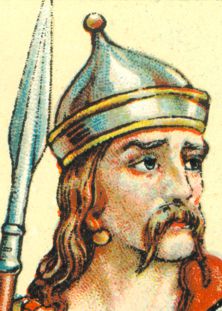 |
There was
no logo or name of manufacturer on any of the cards. There was no box
either, so we had to do some searching in the literature and auction
catalogues. The deck had German indices and was of such fine quality
printing, that we suspected a German origin. We looked through every
catalogue from the Braun series, but didn't find it there. We searched
Sacha's WWW Museum, but couldn't find it there either. It isn't in the
Fournier collection nor in the books describing the Albert Field
collection. But........ we found an almost similar deck in the
Cartorama catalogue of November 2003. Almost similar, because Jean Darquenne's deck had
the name of the maker on the Joker and the Kings and Queens were named
on the cards. According to Jean's description the deck was printed by Carl Flemming & C.T. Wiskott AG from Glogau, Germany, and it was
published there around 1925.
So we contacted Jean to find out a bit more about the names on the
courts and discuss our nameless deck with him. |
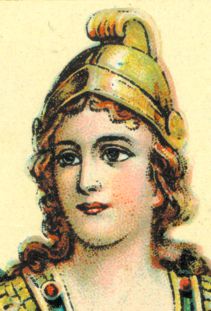 |
|
He has
provided us with the name of the King of Hearts and some pictures. These
and the results of our discussion about the two versions can be
found at the bottom of this page. But first................ ENJOY the
courts of the only known luxury deck by this company. |
The courts show
historical figures They are set against a light yellow background, with a greenish-gold
coloured outline.
On the courts and all the pips the suit signs also have a greenish-gold coloured outline.
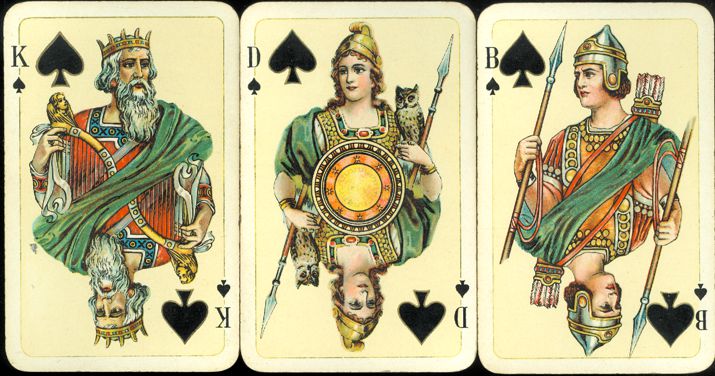
The Kings depict actual ancient rulers, like Alexander the Great (KC),
Julius Caesar (KD), King David (KS) and Charlemagne (KH).
The Queens show
mythological or biblical characters, like Pallas Athene (QS), Judith (QH) or
Esther (QC).
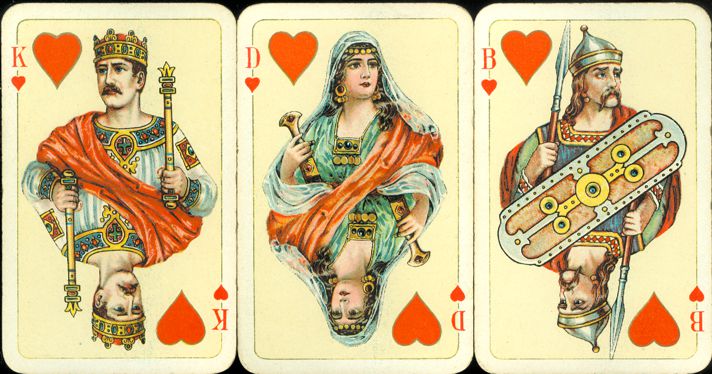
|
The aces are
printed in chromolithography too, but the embellishments almost look like they
were airbrushed. This spray painting technique was developed in the 1890's in
the USA and had become popular for decorations in Europe from the 1920's
on. Each ace has a simple decoration, which is done in a different
colour for each suit, but that colour is the same as used in the
shoulder-straps of the courts in that suit. |
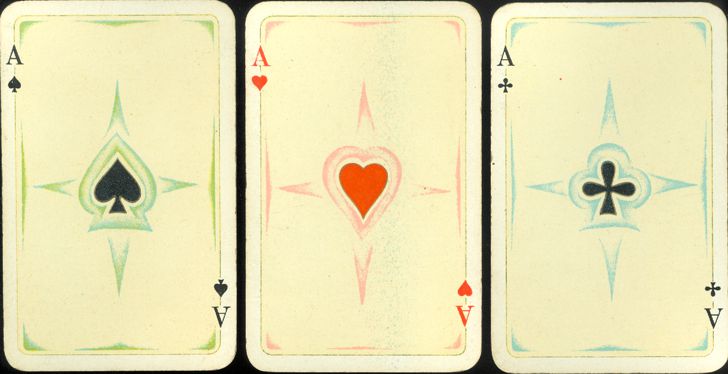
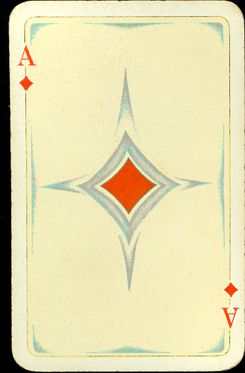
On the Jacks are
ancient soldiers. In the named version they are all called "Schildträger"
(shield-bearers).
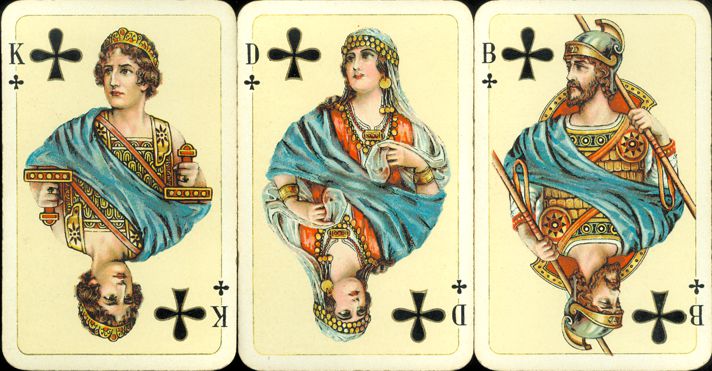
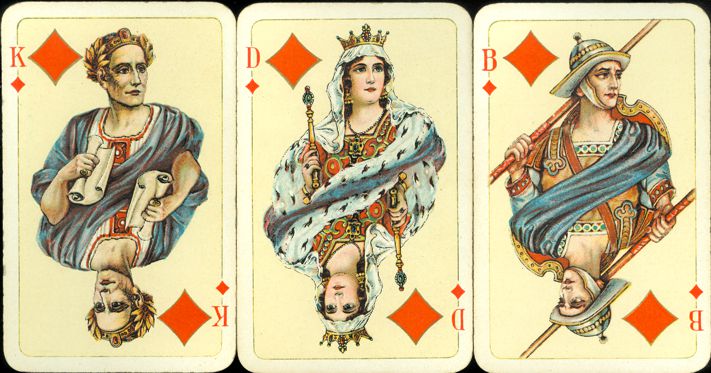
The deck consists
of 52 cards and one joker. The cards have gold corners.
|
|
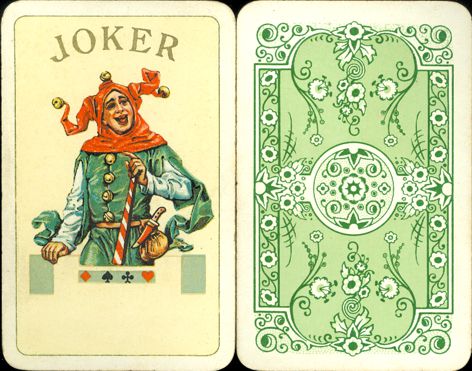
|
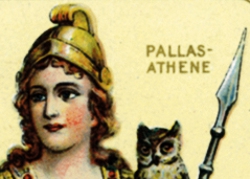 |
|
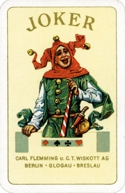 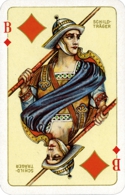 |
|
|
|
On the
right are some images that Jean Darquenne has provided from his version
of the deck. The presence of the names is apparent.
After 2003 Jean had found out that a pricelist by F&W from 1926 had
surfaced and that this deck wasn't mentioned there, so it must have been
published between 1926 and 1932. In that year F&W was taken over by
the VASS.
When we first saw Jean's deck in the catalogue we assumed that our deck
was probably published by the VASS not long after 1932. The VASS had
done the same with a few popular Dondorf patterns and had removed that
name too from those decks. |
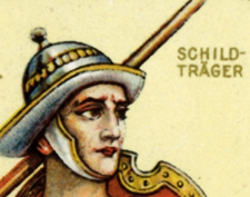 |
|
|
Jean
agreed that this was a possibility, but he also suggested that it might
have been a first edition by F&W. Although that suggestion is a
very pleasant thought, we argued that when a company, that had only
produced versions of standard patterns before, published an obviously
luxurious nonstandard deck, they would probably take enough pride in
their job to mention their name as manufacturer on one of the cards.
That left the question why the VASS had left out the names
on the courts too. As you can see the lettering was printed in a
distinct gold like colour, on the courts as well as on the joker. On the
Joker the word "joker" was printed in that same colour and you
can see that in our deck "joker" is printed in a slightly
different colour. So the VASS could have left out one print-run to get this
result and printed "joker" in a colour (print-run) that was
already used in the other images too. That some vital information on the
courts was lost then too, they would probably have taken that for granted.
But Jean has pricelists and sample books by Dondorf from after that
company had been taken over by F&W and from those there's evidence
that F&W had stopped the production of Dondorf's luxury decks, even
the Baroness pattern, in 1928. And although there's no F&W company
record to support it, one may assume that the production of their own luxury
deck was stopped then too. So, a first edition after all?
Jean's suggestion is that his deck was probably a private order,
produced by F&W and that our deck here was probably produced by the
VASS after 1932. In those years the influence of the nazi party in
Germany had grown and names like Esther and King David would not have
pleased them. We agreed that this could be a very plausible
explanation for the lack of names on our deck.
However, for us it doesn't really matter who made the deck and when. It would be
nice to get a documented answer, but we enjoy the fine printing anyway
and the courts are a pleasure to look at, names or no names. |
BACK TO PRESENT MONTH












